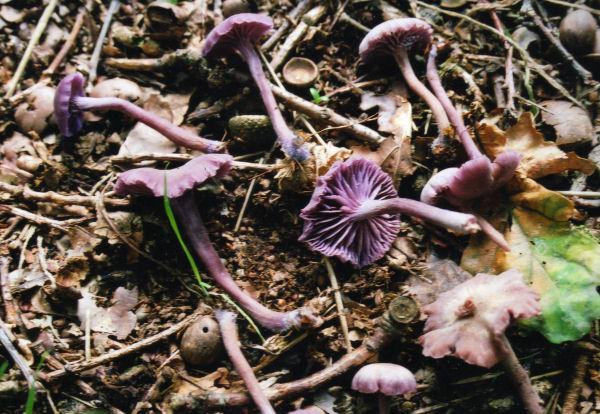1. Too many mushrooms are eaten – mushrooms are hard to digest; chewing well is advised.
2. Mushrooms are eaten raw or undercooked.
3. Too much butter is used in cooking the mushrooms.
4. Alcohol sometimes causes an adverse reaction when eating mushrooms.
5. The mushrooms are not in good condition; they are in some state of decomposition.
6. Some poisonous mushrooms are inadvertently mixed in with the edibles.
7. A personal allergy can cause anything from GI distress to a rash.
8. A prescription drug (MAO inhibitor) can cause a reaction with particular mushrooms, such as polypores.
9. Edible mushrooms that are badly canned can cause botulism.
10. A GI reaction (cramps, diarrhea) or nausea may occur after a meal, not related to the mushrooms eaten. A pre-existing virus may cause this.
There is also the Fear Factor. Someone may be eating wild mushrooms at your table for the first time ever, and be petrified, and become, or imagine becoming, ill because of stress.
Mushrooms known to cause death in Northeastern North America:
1. Amanita virosa AG 551
2. Amanita phalloides AG 543
3. Galerina autumnalis AG 620
4. Lepiota josserandii AG 517
5. Gyromitra esculenta AG 336
Because of the very real possibility of misidentification (for whatever reason) and the very real consequences of severe mushroom poisoning, the following is advised:
Do not eat any Amanitas even though some are known to be edible.Mushrooms to be avoided because a few species in Europe have caused kidney failure and the toxins are found throughout the genus:
Do not eat any LBM (Little Brown Mushroom).
Do not eat any small species of Lepiota.
Do not eat any large Lepiota without first finding out its spore color. Definitely avoid the green-spored Lepiota, Chlorophyllum molybdites -- it will make you seriously ill.
Do not eat any Gyromitra (False Morel), at least not when found east of the Mississippi River.
Do not eat Jack O'Lantern, Omphalotus olearius, mistakenly thinking it is a chanterelle. --
Always keep a fresh specimen in the refrigerator, in case identification is needed for treatment.
Cortinarius, all species -- AG 610ff.
Mushrooms known to cause muscarine-like symptoms [profuse sweating, tunnel vision] in Northeastern North America:
1. Clitocybe dealbata AG 745 --
2. Inocybe, all species AG 626ff. --
Mushrooms known to cause a reaction when alcohol has been consumed up to 72 hours after eating the mushroom:
1. Coprinus atramentarius AG 596
2. Clitocybe clavipes AG 745
Mushroom known to cause disorientation, GI symptoms, muscarine-like symptoms:
Amanita muscaria AG 538
Mushrooms known to cause transient hallucinations:
1. Psilocybe caerulipes, and other blue-staining species of Psilocybe AG 719
2. Gymnopilus spectabilis AG 623
Mushrooms known or suspected to cause mild to severe GI distress:
Gilled Mushrooms:
1. Agaricus meleagris AG 507
2. Amanita gemmata (= A. crenulata) AG 537
3. Armillaria mellea AG 736
4. Chlorophyllum molybdites AG 509
5. Entoloma, many species
6. Hebeloma, all species suspected
7. Lactarius, many species
8. Lepiota naucina AG 519
9. Naematoloma (= Hypholoma) fasciculare AG 709
10. Omphalotus olearius AG 787
11. Paxillus involutus AG 671
12. Russula, several species
13. Tricholoma, several species
14. Tricholomopsis platyphylla AG 807
Boletes:
1. Boletus huronensis (in Bessette, North American Boletes)
2. Boletus (= Chalciporus) piperatus AG 571
3. Boletus sensibilis AG 567
4. Boletus, some species with red pore-mouths
5. Suillus luteus (can be laxative) AG 586
6. Tylopilus eximius AG 592
Other Mushrooms:
1. Morels eaten raw AG 326
2. Gomphus floccosus AG 396
3. Ramaria formosa and possibly other coral fungi AG 408
4. Scleroderma citrinum AG 839
5. Calvatia gigantea, occasionally reported. AG 823





